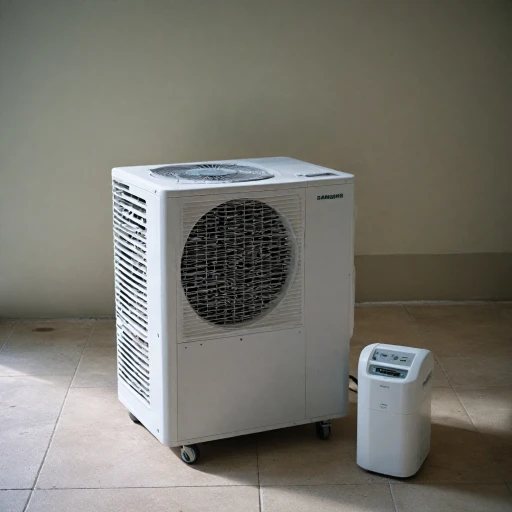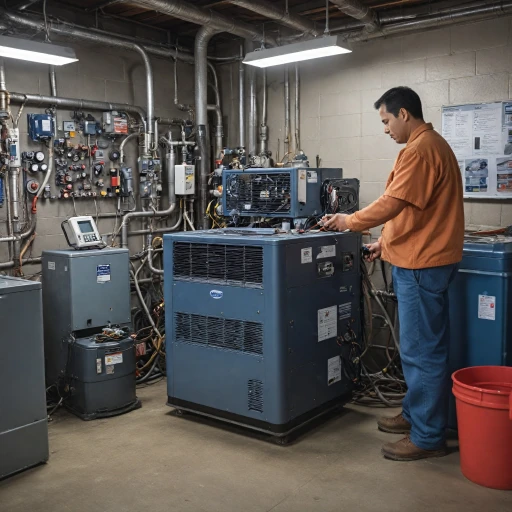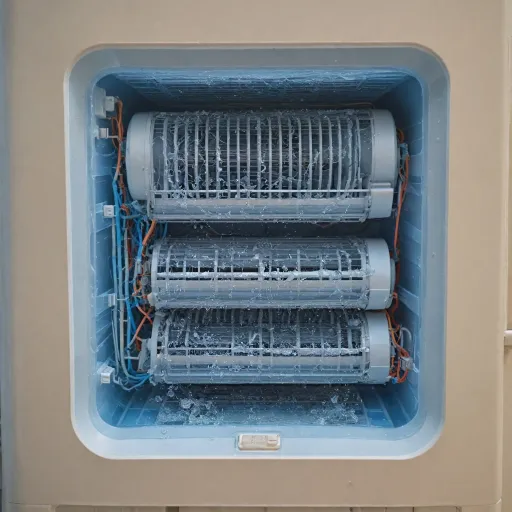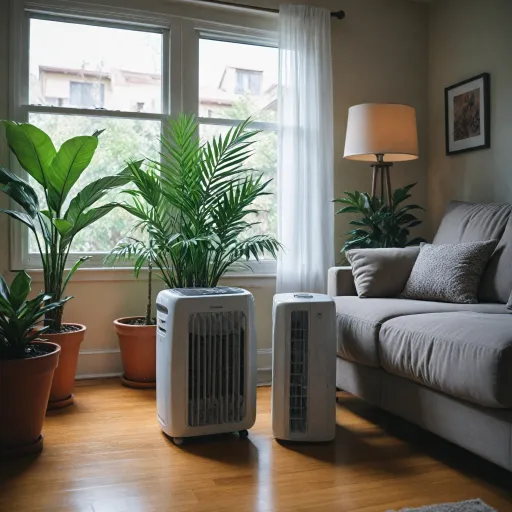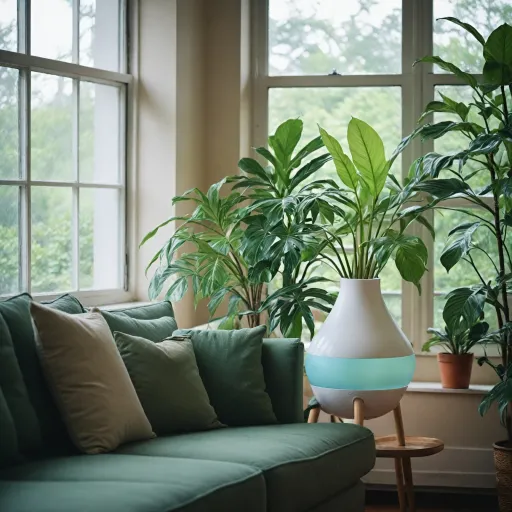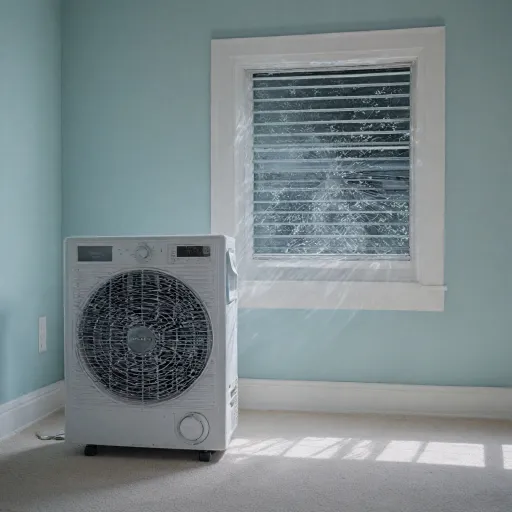
How Water-Cooled Portable ACs Work
Unveiling the Operating Principle of Water-Cooled Portable ACs
Understanding how water-cooled portable air conditioners operate offers a glimpse into their unique cooling capabilities. Unlike traditional air-cooled units, these systems leverage water as a principal component in their cooling process. This fundamental difference has a marked impact on their cooling efficiency and the comfort they provide, particularly in challenging heat environments. At the core, water-cooled portable air conditioners utilize water to absorb heat from the air. Here's a simplified breakdown of the process:- Basic Functioning
- Hot air from the environment is drawn into the unit.
- The air passes over water-cooled coils. During this phase, the heat from the air is transferred to the water, cooling the air in the process.
- The cooled air is then circulated back into the room, providing relief from the overpowering heat.
- The Role of Fans
- These units are equipped with fans that aid in circulating air effectively.
- Fans also help in dissipating any residual heat from the system to enhance overall cooling efficiency.
- To understand more about how specific components like a duct fan play a crucial role in portable air conditioners, explore this insightful blog.
- Portability and Flexibility
- Water-cooled portable ACs are particularly noteworthy for their ease of movement and flexibility in placement.
- They are well-suited for spot cooling applications, where specific areas of a business or home require targeted temperature control.
- Energy Efficiency
- Leveraging water as a coolant can result in reduced energy consumption, as these units can effectively cool spaces while using less electricity compared to some traditional air conditioning solutions.
Advantages of Water-Cooled Portable ACs
Enhanced Cooling Efficiency
Water-cooled portable air conditioners offer a significant advantage in terms of cooling efficiency. Unlike traditional air-cooled units, these systems utilize water to dissipate heat, which can lead to more effective temperature control. This method allows the unit to maintain a consistent cooling capacity, even in higher ambient temperatures, making it a reliable solution for both residential and business environments.
Energy Savings
One of the standout benefits of water-cooled portable air conditioners is their potential for energy savings. By using water as a cooling medium, these units often require less energy to operate compared to their air-cooled counterparts. This can result in lower electricity bills, especially during peak summer months when the demand for cooling solutions is at its highest.
Quiet Operation
For those who prioritize a peaceful environment, water-cooled portable ACs are typically quieter than air-cooled models. The absence of a noisy fan or compressor means these units can operate with minimal sound, making them ideal for bedrooms, offices, or any space where noise reduction is a priority.
Versatile Spot Cooling
These units are particularly effective for spot cooling, providing targeted relief in specific areas. Whether it's a small office, a server room, or a workshop, water-cooled portable air conditioners can deliver focused cooling where it's needed most. This versatility makes them a popular choice for businesses looking to keep specific areas cool without the need for a full-scale HVAC system.
Environmentally Friendly
Water-cooled systems are often considered more environmentally friendly than traditional air-cooled units. By reducing reliance on refrigerants and utilizing water, these systems can lower the environmental impact associated with cooling. This makes them an attractive option for eco-conscious consumers seeking sustainable cooling solutions.
For more insights on enhancing airflow efficiency, consider exploring this guide on inline duct fans.
Challenges and Considerations
Potential Drawbacks and Important Considerations
While water-cooled portable air conditioners offer unique advantages, they also come with certain challenges that potential buyers should be aware of. Understanding these can help you make an informed decision when choosing the right cooling solution for your needs.
Water Source and Consumption
One of the primary considerations is the need for a consistent water source. Unlike air-cooled units, water-cooled portable ACs require a continuous supply of water to function effectively. This can be a limiting factor in areas where water availability is an issue. Additionally, water consumption can vary based on the model and usage, so it's crucial to account for this in your decision-making process.
Installation and Space Requirements
Installation can be more complex compared to air-cooled units. Water-cooled systems may require additional plumbing or connections to a water source, which can increase the initial setup time and cost. Moreover, these units might take up more space due to the need for water tanks or connections, which could be a concern in smaller spaces.
Maintenance Needs
Regular maintenance is essential to ensure the efficient operation of water-cooled portable air conditioners. This includes checking for leaks, cleaning water tanks, and ensuring that the water supply is not interrupted. For more detailed guidance on maintaining your portable air conditioner, you can refer to essential tips for maintaining your portable air conditioner.
Environmental Considerations
While water-cooled units can be more energy-efficient, they may not be the best choice in regions with water scarcity. It's important to weigh the environmental impact of increased water usage against the benefits of potentially lower energy consumption.
By understanding these challenges, you can better assess whether a water-cooled portable air conditioner is the right fit for your cooling needs. It's essential to balance the benefits with these considerations to ensure you choose the most suitable product for your environment.
Comparing Water-Cooled and Air-Cooled Portable ACs
Differences in Cooling Mechanisms
When comparing water-cooled and air-cooled portable air conditioners, the primary distinction lies in their cooling mechanisms. Water-cooled units utilize water as a medium to absorb and dissipate heat, making them efficient in environments where water is readily available. On the other hand, air-cooled models rely on air circulation to remove heat, which can be less effective in extremely hot conditions.
Energy Efficiency and Performance
Water-cooled portable ACs often boast higher energy efficiency due to their ability to maintain consistent cooling performance, even in high ambient temperatures. This can lead to lower energy bills and a more sustainable cooling solution. In contrast, air-cooled units may struggle to maintain efficiency in similar conditions, potentially increasing energy consumption.
Installation and Mobility
While both types of portable air conditioners offer easy installation, water-cooled models might require additional setup for water supply and drainage. This can limit their mobility compared to air-cooled units, which are generally more straightforward to move and set up in different locations. However, for businesses needing spot cooling solutions, the extra effort may be justified by the enhanced cooling capacity of water-cooled units.
Maintenance and Longevity
Maintenance requirements can vary based on the type of unit. Water-cooled air conditioners may need regular checks to ensure water lines are clear and functioning properly, while air-cooled models require routine cleaning of filters and fans to maintain optimal performance. Both types of units benefit from regular maintenance to extend their lifespan and efficiency.
Cost Considerations
Initial costs for water-cooled portable air conditioners can be higher due to their complex systems and installation needs. However, the long-term savings in energy costs and potential for more effective spot cooling can offset the initial investment. Air-cooled units, with their lower upfront costs, might appeal to those seeking a more budget-friendly option, though they may incur higher operational costs in the long run.
Installation and Maintenance Tips
Setting Up Your Water-Cooled Portable AC
Installing a water-cooled portable air conditioner can be a straightforward process if you follow the right steps. These units are designed to be user-friendly, making them an ideal solution for spot cooling in various environments, from homes to businesses. Here’s a guide to help you get started:
- Choose the Right Spot: Ensure the unit is placed near a window or a vent for optimal air circulation. This placement helps the air conditioner efficiently expel heat and maintain a cooler environment.
- Secure Water Supply: Connect the unit to a water source, as water is essential for the cooling process. Make sure the connection is secure to prevent leaks, which could affect the unit's performance.
- Power Connection: Plug the unit into a grounded electrical outlet. Avoid using extension cords, as they can lead to power fluctuations and reduce the unit's efficiency.
Maintaining Your Water-Cooled Portable AC
Regular maintenance is crucial to keep your water-cooled portable air conditioner running smoothly. Here are some tips to ensure longevity and efficiency:
- Clean the Filters: Dust and debris can accumulate in the filters, reducing airflow and cooling capacity. Clean or replace filters regularly to maintain optimal performance.
- Check Water Levels: Ensure the water reservoir is filled to the appropriate level. Low water levels can hinder the cooling process and cause the unit to overheat.
- Inspect the Fans: The fans play a critical role in air circulation. Regularly inspect them for any signs of wear or damage and clean them to prevent dust buildup.
- Monitor for Leaks: Periodically check for any water leaks around the unit. Addressing leaks promptly can prevent water damage and maintain the unit's efficiency.
By following these installation and maintenance tips, you can ensure that your water-cooled portable air conditioner remains a reliable solution for keeping your space cool and comfortable.
Top Water-Cooled Portable AC Models
Leading Water-Cooled Portable AC Models to Consider
When it comes to choosing the right water-cooled portable air conditioner, there are several top models that stand out due to their efficiency, cooling capacity, and ease of use. These units are designed to provide effective spot cooling solutions, making them ideal for both residential and business environments.
- OWC ProCool 5000: Known for its robust cooling capacity, the OWC ProCool 5000 is a popular choice for those seeking a reliable water-cooled portable AC. It features an easy-to-use control panel and a powerful fan system that ensures optimal air distribution.
- Swamp Cooler Elite: This model is perfect for those looking to keep cool in dry climates. The Swamp Cooler Elite uses evaporative cooling technology to provide efficient heat relief, making it a great alternative to traditional air conditioners.
- HydroChill Spot Cooler: Designed for spot cooling, the HydroChill is compact yet powerful. It's ideal for small spaces and offers a free-standing unit that can be easily moved from room to room.
- CoolBreeze 7000: With its high cooling capacity, the CoolBreeze 7000 is perfect for larger areas. It combines water-cooled technology with a heat pump feature, providing versatile cooling solutions for various needs.
These models vary based on their features and capabilities, so it's important to consider your specific cooling needs and the environment in which the unit will be used. Whether you're looking for a portable spot cooler or a more comprehensive air conditioning solution, these water-cooled units offer a range of options to keep your space comfortable.

